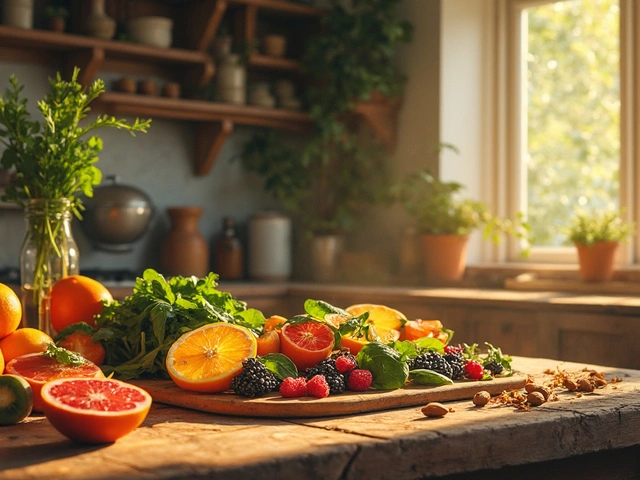Microbiome Diet for Dogs: Simple Steps to Better Gut Health
If your pup seems sluggish, has itchy skin, or fights tummy issues, the gut might be the culprit. A microbiome diet feeds the good bacteria in a dog’s gut, helping digestion, immune response, and overall mood. The best part? You can start with foods you probably already have at home.
Why Your Dog Needs a Healthy Microbiome
The canine gut hosts millions of microbes that break down food, produce vitamins, and keep bad germs in check. When the balance tips toward harmful bacteria, you’ll notice loose stools, gas, or even skin flare‑ups. Feeding the right mix of prebiotic fibers (food for good bugs) and probiotics (live helpful bugs) restores harmony without medication.
Everyday Foods That Support a Strong Microbiome
Prebiotic power foods: Cooked pumpkin, sweet potato, and carrots provide soluble fiber that fuels beneficial bacteria. Add a spoonful of plain kefir or yogurt (make sure it’s lactose‑free for dogs) to give a probiotic boost.
Probiotic sources: Commercial dog probiotics are convenient, but you can also use fermented foods like sauerkraut in tiny amounts. Look for products with live cultures and no added sugar.
Avoid the gut‑killers: Processed treats high in corn or wheat, excessive meat fats, and artificial sweeteners can starve good microbes. Swap these out for natural chew toys or homemade treats made from oat flour and banana.
Start by mixing a quarter cup of cooked pumpkin into your dog’s regular kibble once a day. Over two weeks, increase to half a cup if they handle it well. For a probiotic boost, stir in a tablespoon of plain kefir after meals. Watch for any signs of upset and adjust portions accordingly.
Sample 3‑day meal plan:
- Day 1: Breakfast – kibble + ¼ cup pumpkin; Dinner – kibble + ½ cup sweet potato mash, sprinkle probiotic powder.
- Day 2: Breakfast – kibble + 1 tbsp kefir; Lunch – small raw chicken bite (no bone) with carrot sticks; Dinner – kibble + a spoonful of plain yogurt.
- Day 3: Breakfast – kibble + pumpkin; Snack – frozen banana slice; Dinner – kibble + sweet potato and a pinch of probiotic capsule.
Keep water fresh and encourage slow eating with puzzle feeders. Slower meals give microbes more time to work on the food, reducing bloating.
If your dog has existing health issues or is on medication, check with a vet before adding new foods. Most dogs tolerate these changes well, but a professional can guide dosage for probiotic supplements.
Quick FAQ:
- How long to see results? Most owners notice firmer stools and better energy within 1–2 weeks.
- Can I use human probiotics? Choose a strain safe for dogs (Lactobacillus acidophilus is common) and avoid high‑dose products meant for people.
- Is raw food okay? Raw can be part of the diet, but ensure it’s fresh, unseasoned, and balanced with prebiotic veggies.
Remember, a healthy microbiome is a lifelong commitment. Small daily tweaks add up to big gains in your dog’s happiness and health. Start simple, observe how they react, and keep building on what works. Your pup will thank you with wagging tails and fewer bathroom trips.

Gut Health and Brain Connection: The Gut-Brain Axis, Diet Tips, and Science
Your gut talks to your brain. Here’s the science and a practical 30‑day plan-food, sleep, stress, and smart probiotic use-to support mood, focus, and calm.

Can Better Gut Health Reduce Inflammation?
Sep, 19 2023

Healing Touch: A Game Changer in Holistic Health
Apr, 11 2025

Healthy Diet: Boost Your Immunity Naturally
Feb, 7 2025

Biofeedback Techniques for Stress-Free Living
Aug, 1 2024
